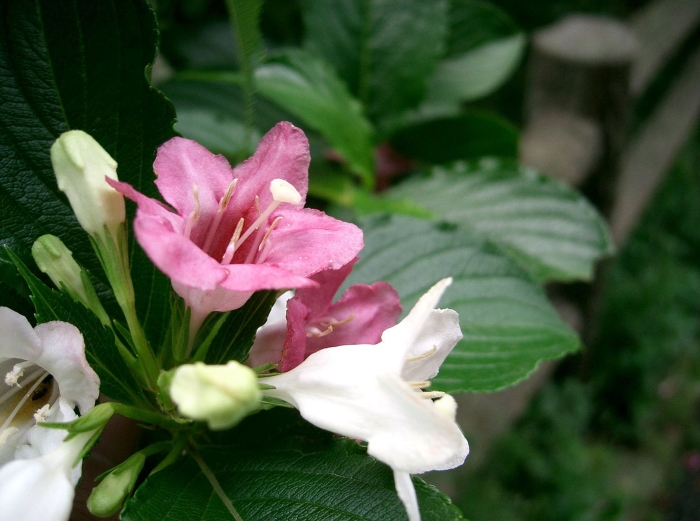Japanese Weigela
(Weigela coraeensis)
Japanese Weigela (Weigela coraeensis)
/
/

KENPEI
CC BY-SA 3.0
Image By:
KENPEI
Recorded By:
Copyright:
CC BY-SA 3.0
Copyright Notice:
Photo by: KENPEI | License Type: CC BY-SA 3.0 | License URL: https://creativecommons.org/licenses/by/2.0 | Uploader: KENPEI | Publisher: Wikimedia Commons |


















Estimated Native Range
Summary
Weigela coraeensis, commonly known as Japanese Weigela, is a deciduous shrub native to the open woodlands and forest edges of Japan. It typically grows to a height of 2.5 - 4 meters and can spread up to 3 meters, featuring a rounded form with arching branches. The leaves are dark green, and the shrub produces funnel-shaped flowers that transition from white in late spring to pink in early summer, offering a showy display that attracts pollinators. The bark is not particularly notable, but the plant may produce a modest amount of inconspicuous fruit.
Japanese Weigela is valued for its fast growth rate, tolerance to pollution, and ability to withstand heavy pruning, making it a resilient choice for urban gardens and borders. It is also hardy, withstanding temperatures as low as -20°C, and can thrive in coastal environments. The plant’s preference for fertile, well-drained soil and adaptability to full sun or partial shade conditions make it versatile for various garden settings. Regular watering is recommended, especially during dry periods. It has received the Royal Horticultural Society’s Award of Garden Merit, indicating its exceptional performance in cultivation. While generally disease-resistant, Weigela can occasionally suffer from leaf and twig blights or be affected by pests such as aphids.CC BY-SA 4.0
Japanese Weigela is valued for its fast growth rate, tolerance to pollution, and ability to withstand heavy pruning, making it a resilient choice for urban gardens and borders. It is also hardy, withstanding temperatures as low as -20°C, and can thrive in coastal environments. The plant’s preference for fertile, well-drained soil and adaptability to full sun or partial shade conditions make it versatile for various garden settings. Regular watering is recommended, especially during dry periods. It has received the Royal Horticultural Society’s Award of Garden Merit, indicating its exceptional performance in cultivation. While generally disease-resistant, Weigela can occasionally suffer from leaf and twig blights or be affected by pests such as aphids.CC BY-SA 4.0
Plant Description
- Plant Type: Shrub
- Height: 5-6 feet
- Width: 5-6 feet
- Growth Rate: Moderate
- Flower Color: Cream, Pink, Red, White
- Flowering Season: Spring, Summer
- Leaf Retention: Deciduous
Growth Requirements
- Sun: Full Sun
- Water: Medium
- Drainage: Slow, Medium, Fast
Common Uses
Bee Garden, Bird Garden, Butterfly Garden, Deer Resistant, Hummingbird Garden, Low Maintenance, Rabbit Resistant, Salt Tolerant
Natural Habitat
Native to the open woodlands and forest edges of Japan
Other Names
Common Names: Korean Weigela, Koreanische Weigelie, Stor Prakttry, 일본병꽃나무
Scientific Names: , Weigela coraeensis, Diervilla coraeensis, Diervilla grandiflora, Weigela coraeensis f. alba, Diervilla amabilis, Weigela fallax, Diervilla coraeensis f. alba, Diervilla fallax, Weigela biformis
GBIF Accepted Name: Weigela coraeensis Thunb.